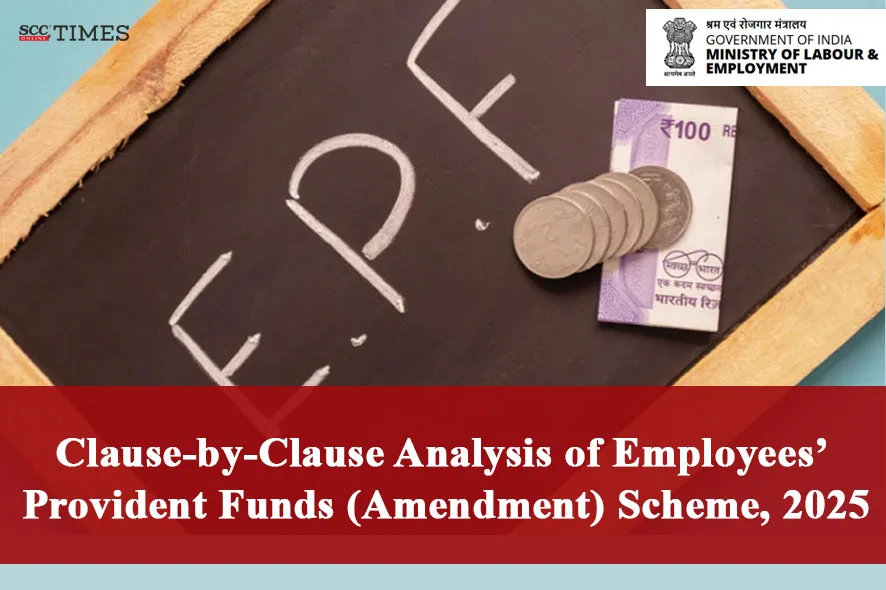On 10-2025, the Ministry of Labour and Employment notified Employees’ Provident Funds (‘EPF’) (Amendment) Scheme, 2025, introducing a special compliance initiative titled the Employees’ Enrolment Campaign, 2025.
The scheme will come into effect on 1-11-2025 and will remain operative till 30-4-2026.
Key Takeaways:
-
The campaign is designed to broaden the reach of social security under the Employees’ Provident Funds and Miscellaneous Provisions Act, 1952.
-
It provides a one-time compliance opportunity for employers to enroll employees who were previously not registered under the EPF Scheme.
-
It applies to employees who:
-
Joined between 01-7- 2017 and 31-10- 2025.
-
Are alive and employed on the date of declaration.
-
-
Employees who joined before 1-7-2017 are not eligible under this scheme.
-
Employers who are not yet registered with Employees’ Provident Fund Organisation (‘EPFO’) can apply for coverage during the campaign period.
-
Participating employers are required to:
-
Create Face Authentication—verified Universal Account Numbers (‘UANs’) for each eligible employee using the UMANG App, ensuring secure identity verification.
-
Deposit contributions through the Electronic Challan-cum-Return (‘ECR’) system, which facilitates digital payment and record tracking.
-
-
All eligible employees will declare online via the EPFO portal, and the declaration will be linked to the corresponding ECR.
-
A flat damage fee of ₹100 is applicable per declaration. Employers are allowed to submit only one consolidated declaration covering all eligible employees.
-
Employers are required to pay their full share of EPF contributions. The employee’s share is waived if it was not previously deducted from wages.
-
For contributions related to past periods, employers will also be required to pay interest under Section 7Q and administrative charges.
-
If any inquiry under Section 7A or related provisions is pending, both employer and employee contributions will be paid in full.
-
These provisions are intended to help employers rectify past non-compliance while ensuring employees receive EPF benefits.
-
The declaration will be submitted online and linked to the ECR using a Temporary Return Reference Number.
-
Employers will maintain regular EPF compliance from the date of declaration onward.
-
Contributions for past employment periods will be deposited based on the declared date of joining of each employee.
-
Inquiry officers are required to consider the declaration during proceedings. However, cases already concluded under Section 7A or related provisions are excluded from the campaign.
-
EPFO will not initiate suo motu compliance action against employers for employees who have left the establishment before the declaration date, provided:
-
All eligible employees have been declared
-
No pending contributions remain
-
-
Any declaration made through misrepresentation or concealment of facts will be considered invalid and subject to penal action under the EPF Act.
-
The amendment is linked with the Pradhan Mantri-Viksit Bharat Rojgar Yojana (‘PMVBRY’), allowing employers who register or declare additional employees under this campaign to avail PMVBRY benefits.
-
Under Part A, benefits apply to new employees who join after the declaration or conclusion of any pending inquiry.
-
Under Part B, eligibility begins six months after the declaration or inquiry conclusion and continues until 31-7-2027. Metrics such as net additionality and length of service will be calculated from this start date.
-
If PMVBRY benefits were already received before the declaration, they will be adjusted against future payments or recovered if no future payments are due.
-
Employers can submit ECRs for the 6-month period along with applicable contributions to qualify for PMVBRY benefits.
-
Paragraph 30 of the EPF Scheme has been amended to waive the employee’s contribution for the campaign period, provided it was not deducted from wages.
-
A new Table-2 under Paragraph 32-A introduces a flat damage fee of ₹100 for defaults occurring between 1-7-2017 and 31-10-2025.
-
This ₹100 fee is considered full compliance under the:



